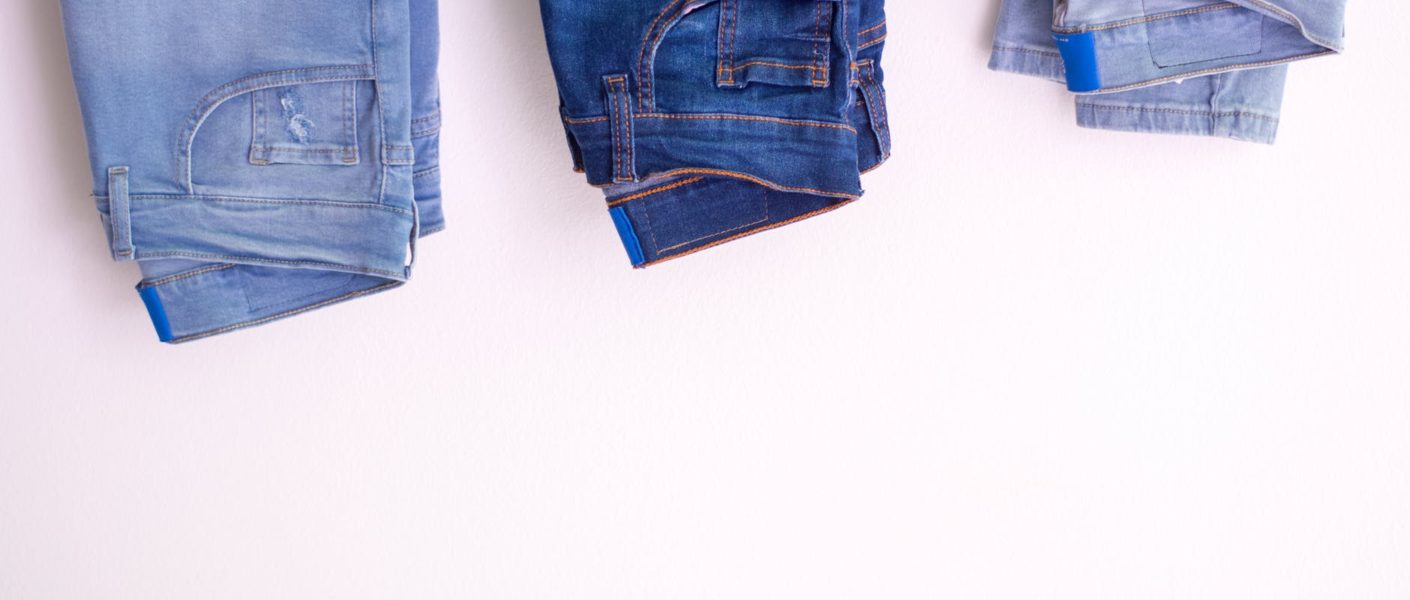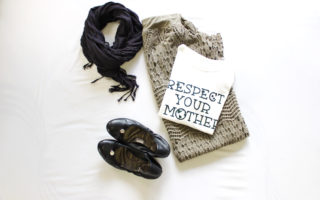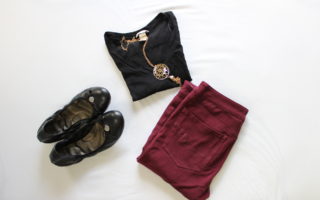There are many ways that our shopping habits and clothing choices can help save the world. Sustainable fashion encompasses both the brand and the consumer. For brands, they have an ethical responsibility to pay their garment workers a living wage and ensure they have a safe workplace. They should maximize the good they are doing society and also focus on having minimal impact on the environment. This may come in the form of: fair wages, organic textile farming, no child labor, water conservation practices, biodiversity, and many other factors.
Sustainable fashion is a movement that places importance on all steps in the supply chain of a clothing item. Luckily, there are more and more companies who are focusing on sustainable fashion and trying to do good in the world. Not only that, but we as consumers have the power and responsibility to research what WE can do to support sustainable fashion and make our world a better place.
Fashion Facts:
- Most people around the world don’t wear at least 50% of their wardrobe.
- Eighty percent of garment workers are women.
- An estimated 20%-35% of microplastics in the ocean are from synthetic fibers. (Yes, your activewear is shedding microplastics. Lots and lots.)
- An estimated 170 million children are engaged in child labor, or 11% of the global population of children, according to the ILO. Many of these are working in the fast fashion industry.
- One pair of jeans takes roughly 2,000 gallons of water to produce.
What is Fast Fashion?
Fast fashion refers to fashion pieces that go out of style very quickly. You can wear them for this season, but by next year…that style is out! These pieces are often cheaply made and are inexpensive to the consumer. Next time you’re in Zara or H&M looking through their tees, notice the irony behind that $8 shirt with the words I’M A FEMINIST emblazoned across the front.
That shirt was undoubtedly made by women in a third world country, who got paid poverty wages in sweatshop conditions. If the price to the consumer is only $8 and the company is still making a profit, can you imagine how little the person who sewed that shirt was paid?! This is the sad reality behind companies who are selling their clothes for the bare minimum. Only between 1% and 25% of traced facilities in H&M’s supply chain pay a living wage to their employees.
Soon (assuming we actually do wear it), that cheap t-shirt has holes in it and is worn thin. Tossed in the garbage, we’re headed back to the store to buy another cheap tee. And the cycle continues.
I’m here to tell you: Break that cycle! Educate yourself! Shop consciously! Know what your dollar is supporting!
Here’s How You Can Help.
Do you want to take a stand against modern-day slavery, child labor, microplastics in our oceans, animal rights, gender discrimination, inhumane working conditions, or water consumption? The fashion industry encompasses all of these global issues. With a few simple tips up your sleeve, you can become a conscious consumer who makes intentional purchases from ethical and eco-friendly companies. Here’s how your closet can help save our world!
Don’t buy it at all.
Honestly, the most sustainable fashion piece is the one you don’t buy at all. Obviously this isn’t an option for all of us, but before you buy something new…ask yourself. Do I need it? Do I love it? Will it last me a long time? How often will I wear it? Shop your closet before buying anything new.
Rent it.
If you’re looking to buy something for a special event or to wear only once, check to see if there’s somewhere you can rent locally. Renting online is also an option: check out this list of 7 stores you can rent designer dresses and clothing from online. Some of these are monthly subscription box services, which are the perfect option if you’re pregnant or need to regularly wear new outfits for work events.
Take care of it.
Once you own something, take good care of it. Only wash it when it needs to be washed. Line dry when and if you can. Mend holes and treat stains instead of tossing it at the first sign of wear and tear.
Shop secondhand.
Always shop secondhand before buying new. Check your local secondhand stores to see what’s available! If you’re looking for a specific piece or brand, there are lots of online thrift stores that sell high-end fashion items from your favorite brands. This is a great option if you’re particularly attached to a certain brand, but you still want to make ethical and eco-friendly decisions. Check out this list of the best online thrift stores.
Invest in slow fashion.
Buy timeless pieces that will stay in style forever (from ethical companies, of course). These pieces can form the basis for your capsule wardrobe, and ensure you always have something to wear. Some examples for women are: a little black dress, a black blazer and a white dress shirt.
Buy from companies who make their clothes to last. Take Patagonia, for example. Instead of encouraging customers to buy more, more and more, they recommend sending your products back in to them for a repair. No clothing is wasted! Their products are built to last for a lifetime. Spend your money wisely and be a conscious consumer.
Wise up to greenwashing.
Greenwashing is an attempt by a company’s PR team to appear eco-friendly and green to appeal to eco-conscious customers. Manipulative marketing, smoke and mirrors…whatever you want to call it, don’t fall for it! A couple classic examples are H&M’s “Conscious” line and BooHoo’s “For the Future” line.
Here are a few ways to spot greenwashing:
- The Cost: If the product is cheap, that’s an immediate red flag. Ethical and sustainably sourced products cost money to make. You should expect to pay a more expensive price tag for sustainable clothing.
- Product Packaging: If the product is packaged in unnecessary single use plastics, can the company really claim it’s eco-friendly? Hint: the answer is a solid NOPE.
- Company’s Transparency: Ask companies for more details about their supply chain process. If they give clear and verifiable answers, that’s a good sign.
- The Company as a Whole: How does the company operate as a whole? If they have one sustainable fashion line, but the rest is rooted in fast fashion and cheap price tags–chances are good it’s just a greenwashing tactic.
Build a capsule wardrobe.
A capsule wardrobe means slimming your clothing collection down to a mere 30-50 pieces (excluding underwear). While this seems like a crazy task, think about how many clothes in your closet you actually wear. In Marie Kondo’s words, how many of your outfits spark joy? Do you find yourself staring into your closet, grumbling “I don’t have any clothes,” while staring at your 50 different shirts? This happens to me All. The. Time.
Building a capsule wardrobe allows you to create many different outfits from just a few pieces of clothing (that you totally love to wear)! Do a quick Pinterest search for capsule wardrobe, and you’ll be met with so many great ideas for styling a few basic items of clothing. I’ll be working with a capsule wardrobe designer over the next couple of weeks to transform my closet and I will absolutely report back on that experience!
Choose eco-friendly fabrics.
Every time you wash your clothes, they shed micro-plastics into the water supply. Activewear is the guiltiest culprit of them all. As that micro-plastic filled water drains out of your washer, it goes into streams, rivers and the ocean. By choosing fabrics such as hemp, linen and organic cotton, you are minimizing the amount of micro-plastics that are going into the water. Here’s a detailed explanation on why these fabrics are so eco-friendly.
All in all…
There are many ways that we can support ethical and sustainable fashion. Regardless of what philosophies are most important to you, there are so many things you can do to make a difference. Whether you choose to shop secondhand, create a capsule wardrobe, or only shop fair-trade clothing companies–any or all of these will make a significant difference. Educate yourself, educate your friends and start a conversation in your community about sustainable fashion. Together, all of our clothing choices can make the world a better place.



